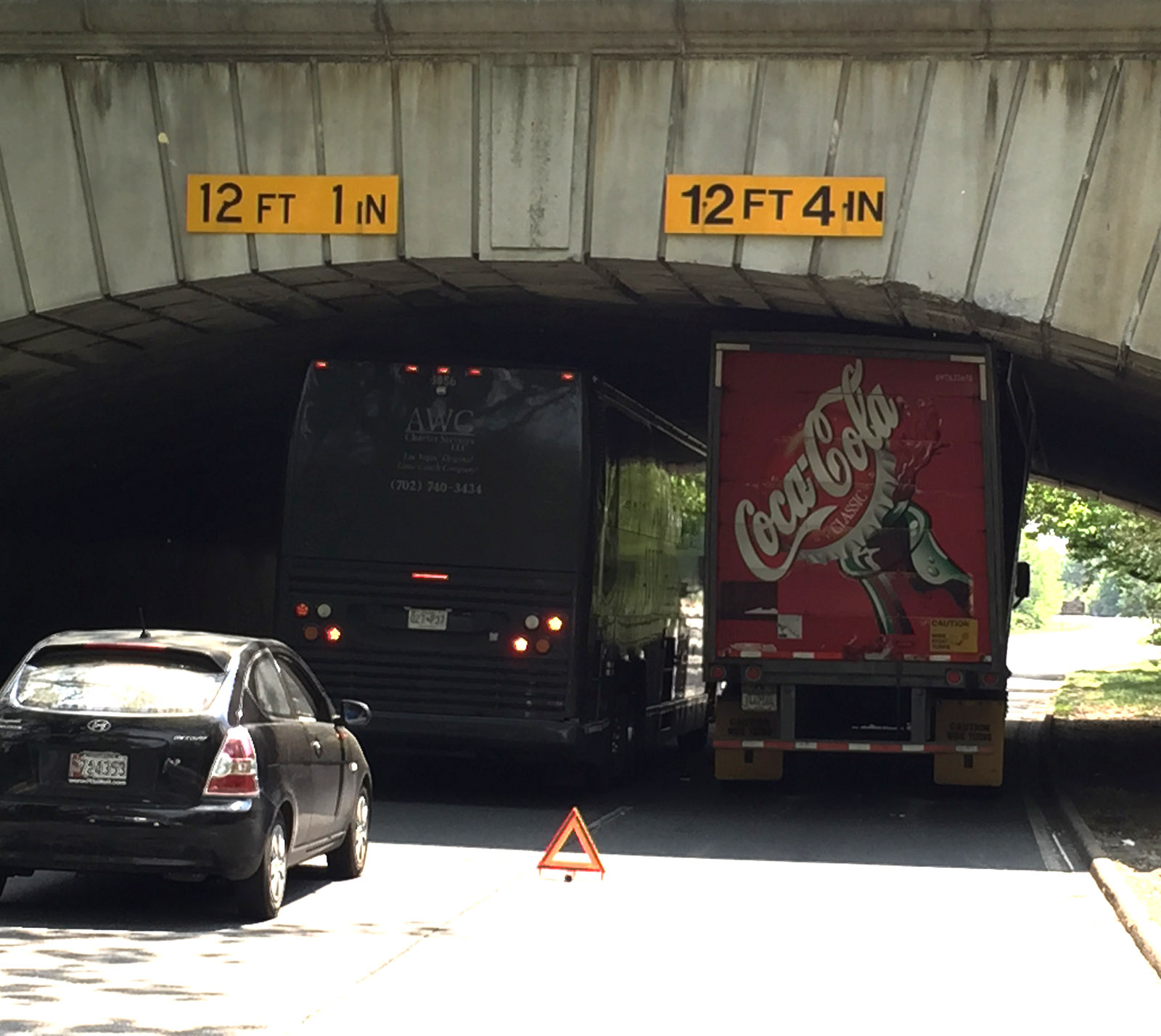
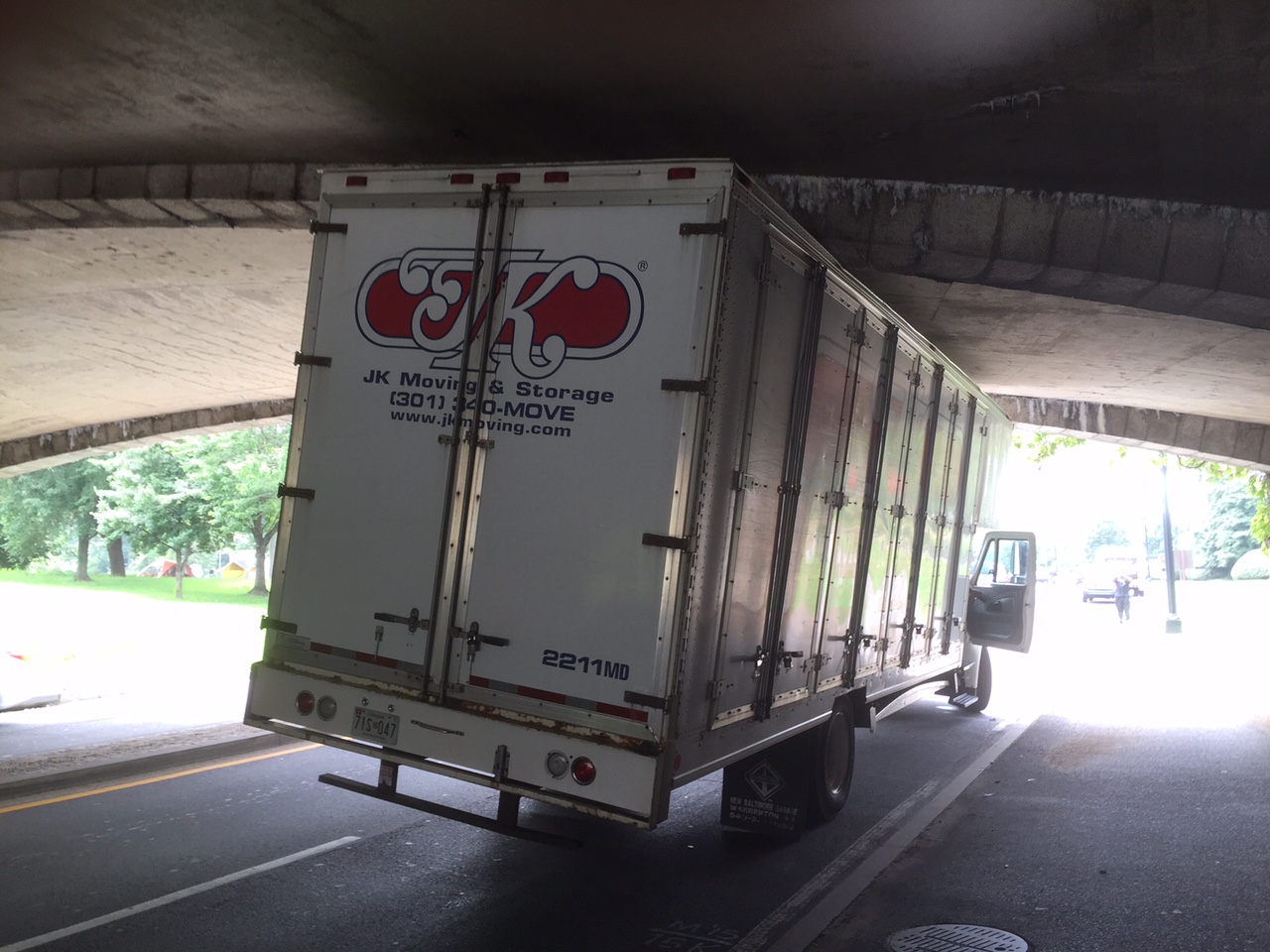

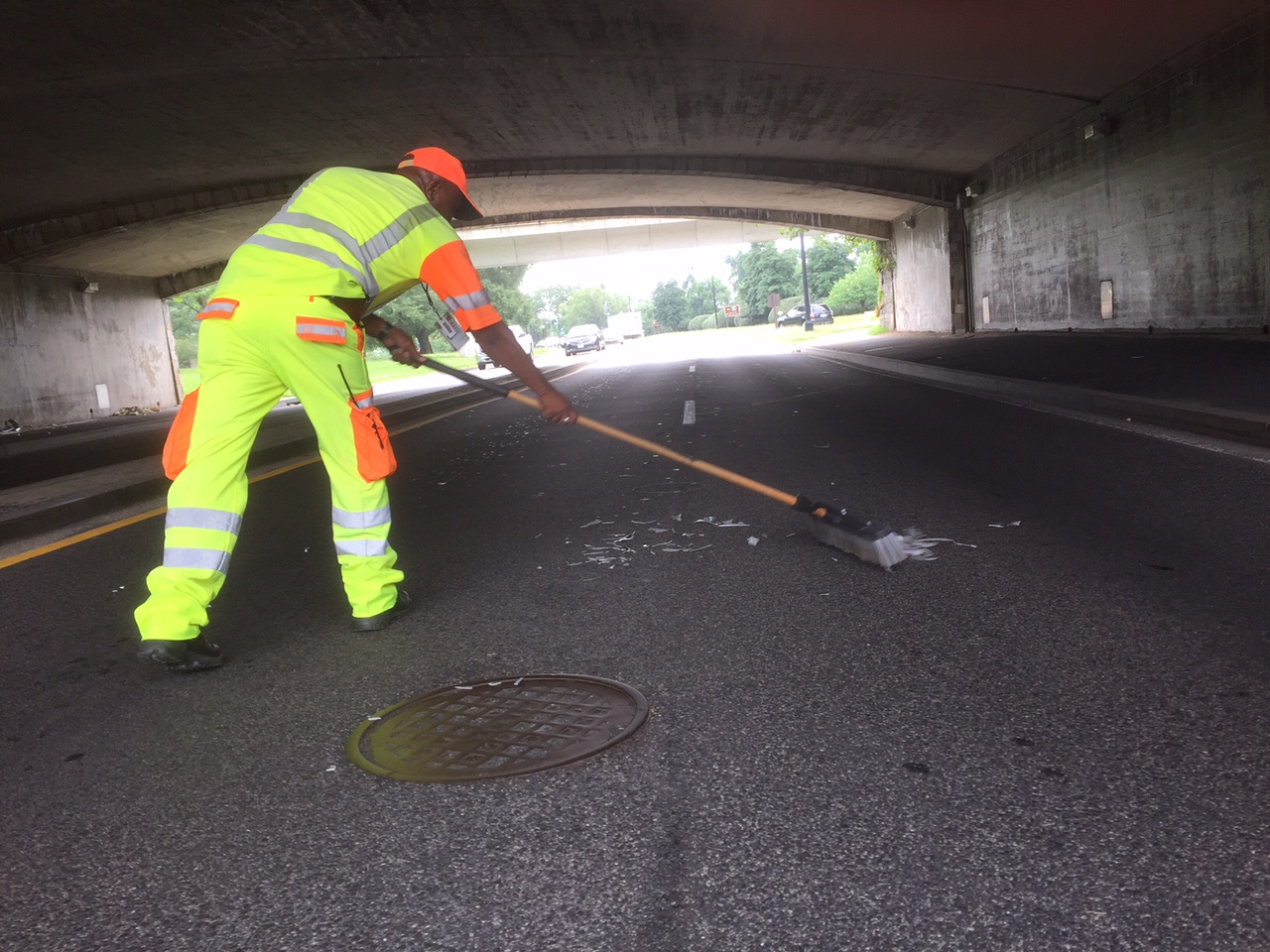
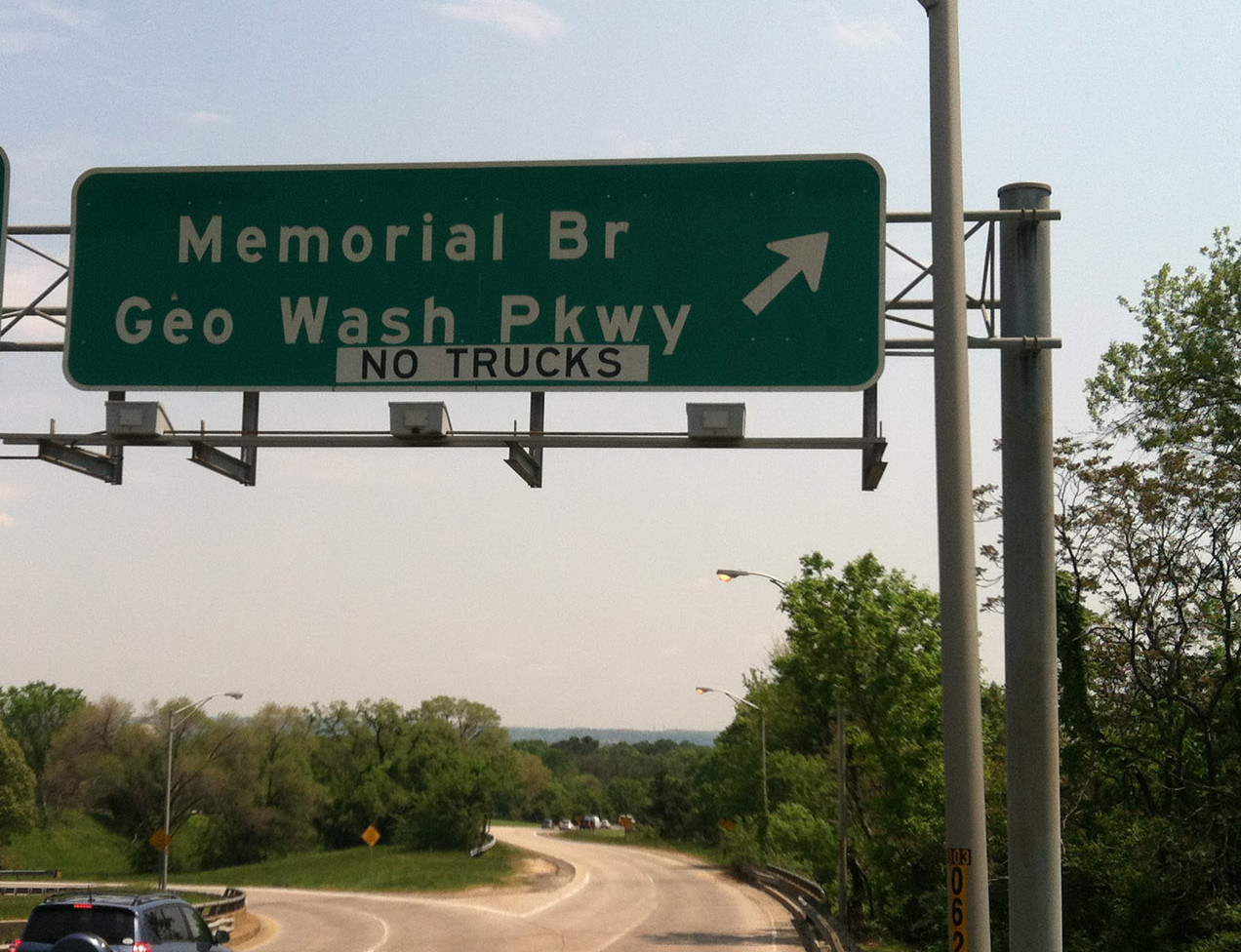
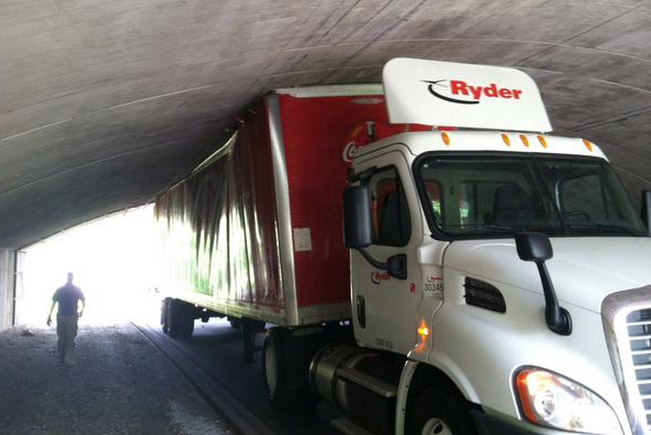
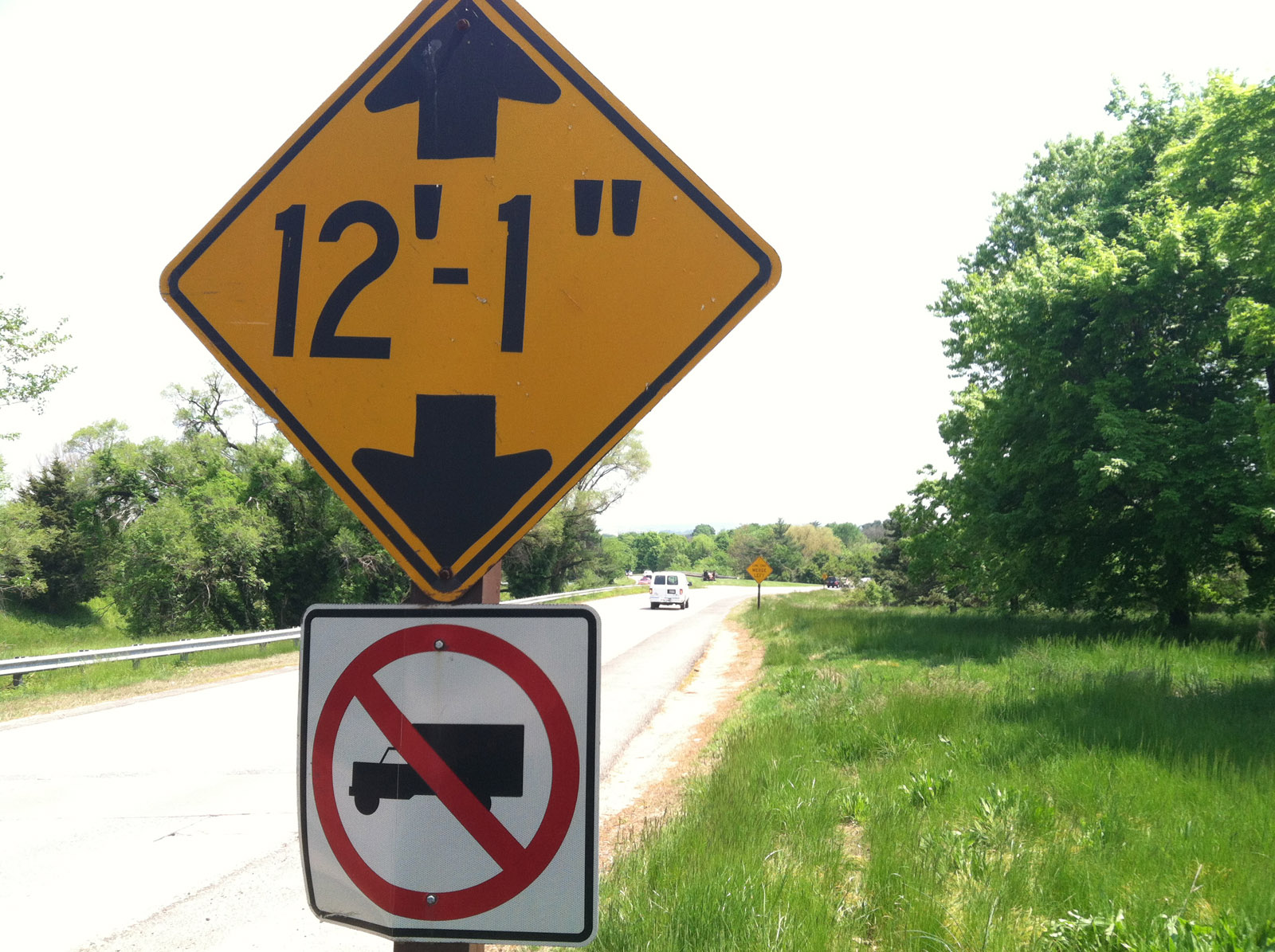
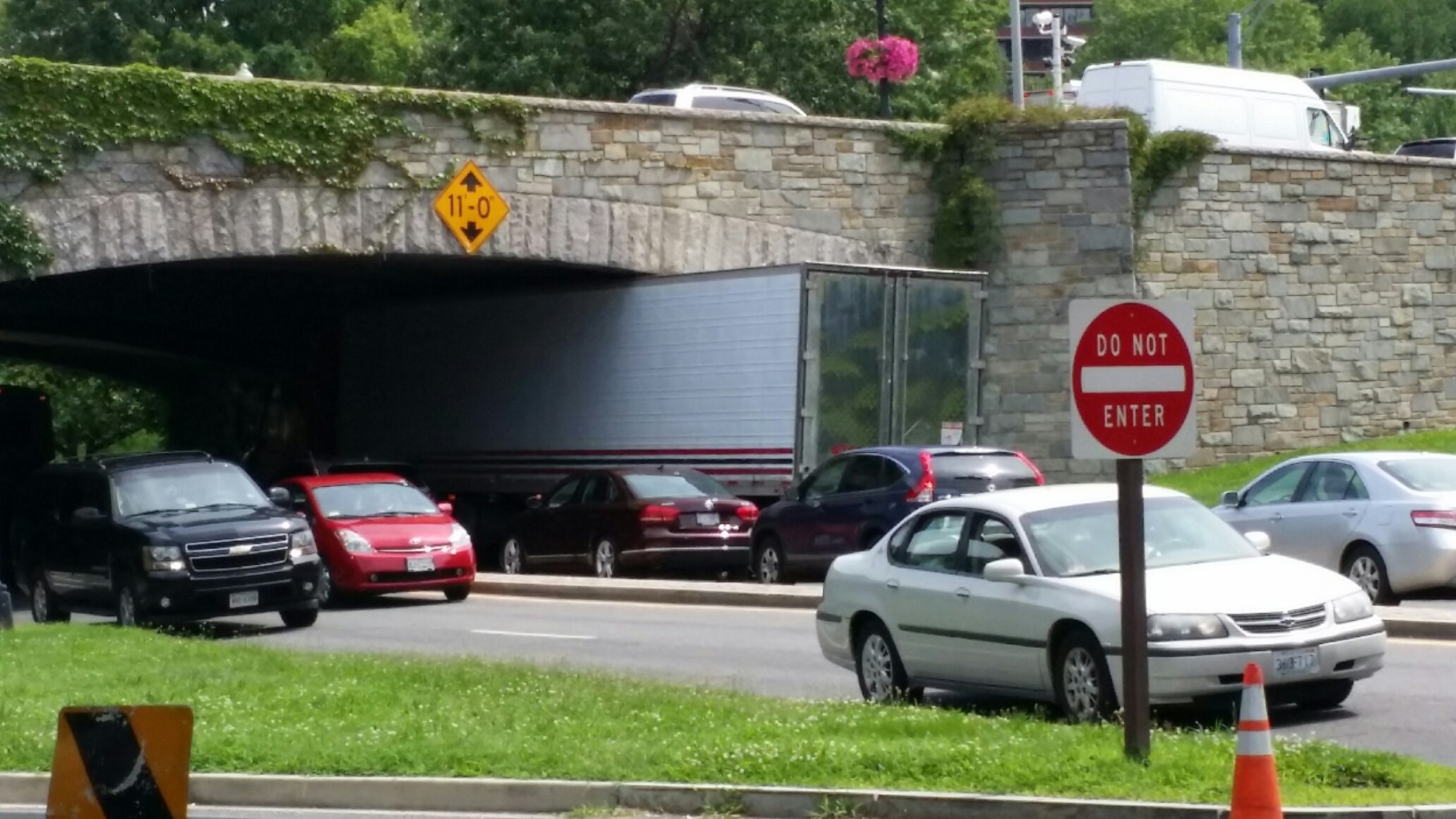

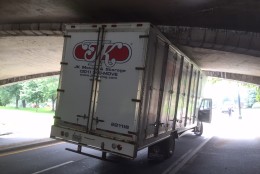
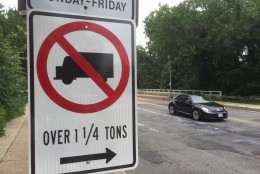
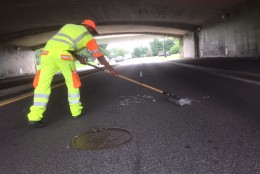
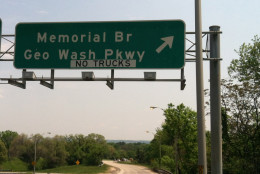
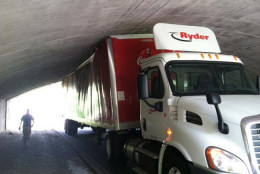
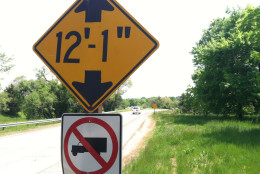
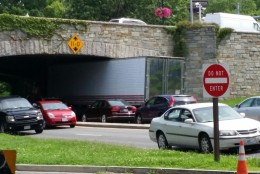
WASHINGTON — For the second time in a week, an over-height truck became lodged under a low-clearance bridge on the Rock Creek Parkway in D.C., requiring a lengthy extrication and causing long traffic delays.
The moving truck was traveling southbound on the Rock Creek Parkway around 11 a.m. Wednesday when it collided with the K Street/Whitehurst Freeway overpass. The arched overpass, at its lowest point, is 12 feet high.
A similar incident occurred Monday, when a large truck drove into the same tunnel in the northbound lanes.
Crews with the U.S. Parkway Police and District Department of Transportation deflated the tires on both vehicles, lowering their height to allow the trucks to be dislodged from the underpass. There was no significant bridge damage evident following the collisions.
The truck driver in Wednesday’s incident was issued a $25 citation for operating a commercial vehicle on a scenic bypass. The wreck was cleared by early afternoon.
Commercial vehicles and trucks more than 1 1/4 tons in weight are prohibited on the National Park Service’s scenic parkways.
Lt. Roxanne Brown-Ankney, commander for the traffic safety unit for the U.S. Park Police, says that truck traffic is a recurring issue on the area parkways.
“The commercial vehicles are a problem. These are scenic roadways, even though they’re used as commuter routes, they’re not designed for that.”
Brown-Ankney says trucks wander onto Rock Creek Parkway in the West End and the southbound George Washington Parkway near Memorial Bridge on a daily basis.
Brown-Ankney says trucks of all sizes are banned from parkways including “anything with commercial markings. So a landscape truck or a home improvement truck that has commercial markings is not allowed to drive on the Rock Creek, George Washington, Baltimore Washington or Suitland parkways.”
Despite “No Truck” warning signs and height clearance guide signs posted on the ramps toward and the bridges above the parkways, U.S. Park Police admit that many truck drivers remain oblivious to the restrictions.
“One of the other issues is there’s a special GPS device made for motor-carriers, for large vehicles. And that will tell the trucks where they’re restricted from driving, either by weight or by height. It’s more expensive. A lot of these truckers just use the same GPS that any normal commuter has on their phone and that will not tell them where restricted roadways are.”



